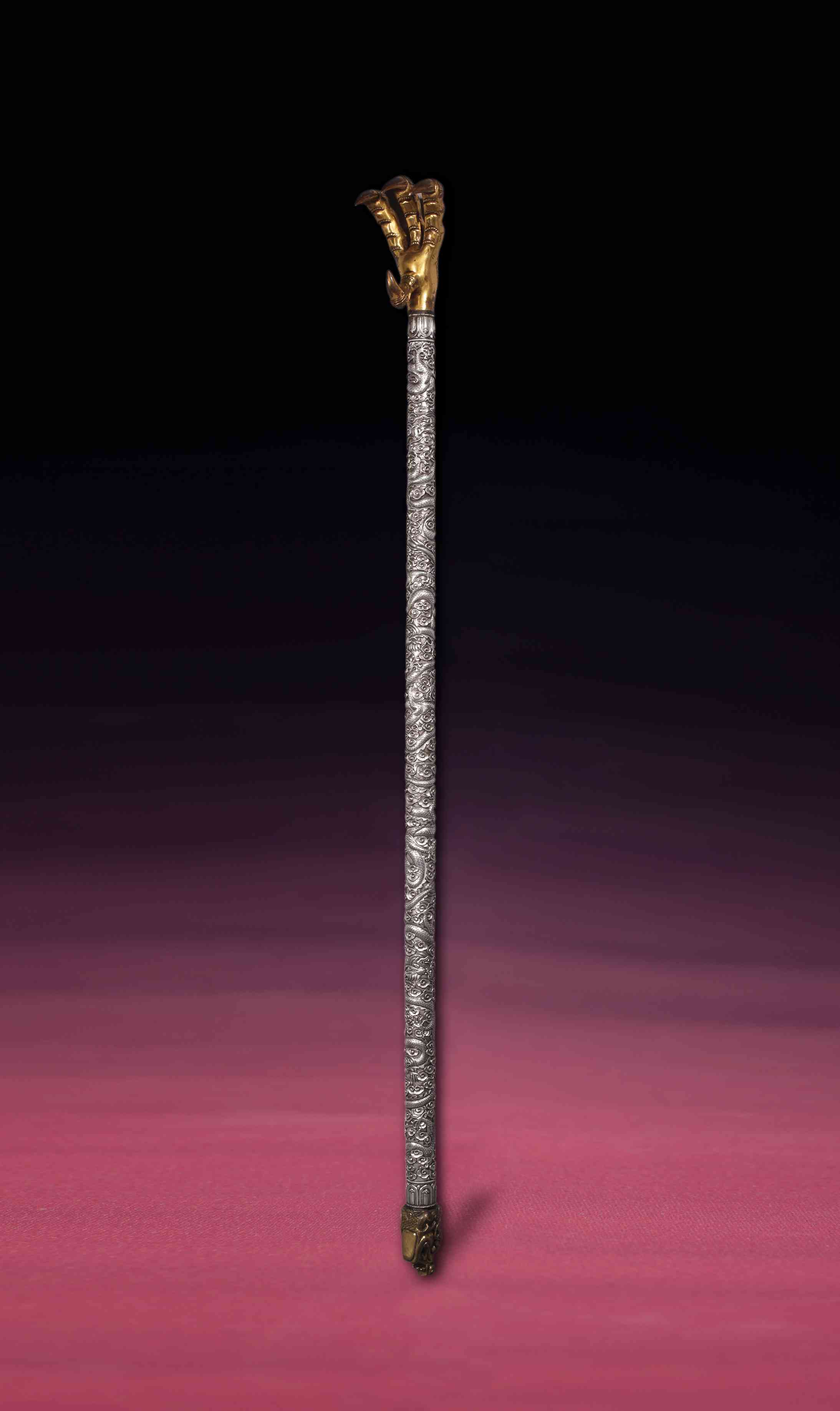权杖
权杖北京
18世纪
高133厘米
铜鎏金、银柄锤揲
Scepter
Beijing
18th Century
H. 133 cm
Silver, Gilt Bronze, cast in several pieces
自秦始皇统一六国後,把古代传说中的神和人最尊重的三皇五帝称号合二为一,给自己定尊号为“皇帝”时,“皇帝”便成为我国历代封建国家最高统治者的称谓,皇权也成为至高无上、无法被超越的权力,在中国延续长达二千餘年之久。权杖是皇家宫廷用於惩治皇亲国戚触犯国家典章制度时拿出来代表皇权威严的一种礼器。汉代以後,龙就逐渐代表了皇帝,成为皇权的象徵。
此权杖为清代宫廷式样,分别由龙首、丈身、龙爪组成,长为三尺三寸,依照古制丈量典籍的规定制式,杖身用纯银材质锤揲雕刻而成,八条龙错落有致地盘缠於杖身上,雕刻极富有张力。龙的前额饱满、宽阔,长长的龙角象徵着社稷长存,眼神威严而庄重,龙爪锋利威武,神圣不可侵犯。八条龙的形象鲜活、完美,神态逼真、生气溢出,朵朵浮云衬托出无上权力,尽显皇家气派。再加上权杖本身的龙头、龙爪,构成了“九龙祥云”,也成为权利、富贵及中华民族的象征。
Since the first Emperor of China, Emperor Qin (Qinshihuang), every Emperor represents the highest might on earth. The scepter symbolizes this power and gives the owner authority. Introduced during the Han Dynasty, the dragon also symbolizes this authority and also the Emperor itself.
It's composited of a scepter rod, the head of a dragon on one end and with a dragon claw on the other. It measures approximately 133 cm. The scepter rod is made of hammered Sterling Silver illustrated with eight dragons. The dragons are very fine and life-like crafted. Beside the eight dragons there are also clouds illustrated on the scepter rod, symbolizing wealth and the Empresses might. Both ends of the scepter, the dragon head and the dragon claws are gilded brass.
数据来源:北京保利国际拍卖有限公司
